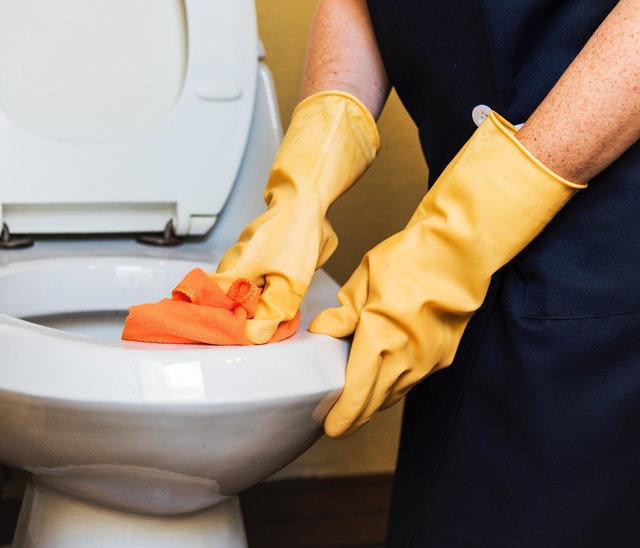Is your North Carolina restaurant's kitchen ready for a health inspection? Let’s face it. It’s often pretty hard to prepare for a health inspection.
Why?
One: These inspections are often impromptu; they can happen at any day and time.
Two: If you run a busy restaurant, it’s easy to lose track of some aspects of your kitchen.
So, it’s true. Health inspection can be quite stressful for you - as a restaurant owner. However, there are a few things you can do to save yourself from the horrors that come with bad reviews and being shut down because of Health Code violations.
This post highlights some of the most important areas health inspectors will look at in your restaurant's kitchen. Ensuring that everything is right in these areas is the only guarantee you’ll have of a stress-free and pleasant inspection.
9 Areas Health Inspectors Look in a Restaurant's Kitchen
In general, health inspectors often focus on a few key aspects of your kitchen. By focusing on these areas you'll be able to pass your city's health inspection and keep your restaurant open for business.
Here are nine common areas inspectors examine:
1. Food Temperatures
Health inspectors are often very strict when it comes to food safety temperatures. Therefore, you should make sure that you avoid the food temperature danger zone; between 40°F and 140°F. It’s when food is more susceptible to bacteria.
To be on the safe side, ensure you:
- Store FROZEN food below 0°F (-18°C)
- Store COLD food in temperatures below 40°F (4°C)
- Keep HOT food above 140°F (60°C).
Also, inspect your freezers and refrigerators periodically for faults just to be sure that thermometers are working as they should.
2. Staff Hygiene
It goes without saying that poor employee hygiene can land you and your business in trouble, especially from staff members handling food.
Every kitchen employee should wash their hands thoroughly before and after they handle food. Make sure there are a number of hot/cold water stations with soap dispensers and sufficient paper towels around the kitchen.
Moreover, these hand-washing stations need to be easily accessible. And they should be separate from dishwashing and preparation stations. You also need to avail disposable gloves and hair nets for your kitchen staff.

3. Food Storage
It’s a general restaurant kitchen rule that food needs to be protected from contamination. Any health inspector will make it a priority to walk-through your storage system.
Basically, ready-to-eat or cooked food should be stored above raw foods. For example, raw meat should be at the bottom of your refrigerator and produce at the top. That makes it easy for you to prevent cross-contamination.
Also, you should make sure you cover/wrap prepared food. Use clean water to prepare food, drinks, and ice. Lastly, ensure you properly label pesticides and chemicals. Store chemical products away from food storage and preparation areas.
4. Dynamic Spaces
Dynamic spaces are simply areas in your restaurant kitchen where food is actively handled and prepared.
These areas offer a clear snapshot of how well your kitchen is complying with food safety regulations. Therefore, you should ensure that your dynamic spaces are clean and sanitized at all times.
5. Food Handling Equipment and Utensils
You also need to consider the state of your food preparation/handling equipment and utensils. Discard old, cracked utensils. Also, replace deeply-grooved surfaces because they aren’t easy to clean.
Ensure that all utensils and equipment are hand-washed and properly rinsed. Sanitize your ice machine at least 2-4 times per year and make sure you empty and clean your ice bins periodically.

6. Kitchen Sanitation
Obviously, you need to make sure your kitchen is clean at all times. That also means cleaning your walls and ceilings. Generally, all kitchen surfaces need to be non-absorbent, easy to clean and smooth.
Instruct your kitchen staff to clean their workspaces every time they want to use them or have just completed a task.
Also, you need to make sure that your grease traps are in good shape and that your kitchen’s drainage is clean and in good working condition.
7. Washrooms, Change Rooms, and Toilets
You should also see to it that all staff and customer washrooms/toilets are always clean and well-maintained. That means availing hot/cold running water, soap, paper towels, and/or a hot air dryer in each washroom.

8. Pests and Mold
Before the health inspector completes their walk-through, they’ll also look out for signs of mold formation or pests. They both pose health risks; not only to your clients but also to your staff.
Therefore, you have to always be on the lookout for pest infestation and mold formation in and around your North Carolina restaurant's kitchen. The most obvious signs of pest infestation include droppings, nesting sites, and dead/live pests.
If you notice any of these signs, contact a pest control company for help. You can also seal off any opening to prevent pests from getting into your premise.
Moreover, cut off their food supply by making sure that all foods are packed and aren’t accessible to pests, or you can clean your kitchen to ensure that there are no food particles lying around.
9. Food Safety Awareness
The health inspector may also ask staff members a few questions on food safety or observe how they handle food. In fact, a Food Safety Certification Course is a requirement as per local Health Departments. That’s why it’s imperative that the person in charge, whether it be the owner or manager, gets food safety training.
In conclusion, the tips above are all you need to prepare for an impromptu health inspection in North Carolina. The main things to remember are hygiene, temperatures, storage, and dynamic spaces. Getting them right will increase your chances of getting a better health review/rating.